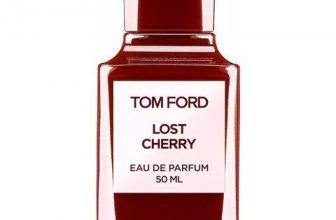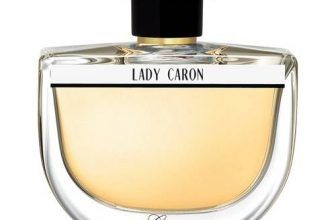Understanding Perfume Families: A Fragrance Guide
Perfume families serve as a classification system that helps consumers and professionals alike navigate the vast world of fragrances. The four primary families include floral, oriental, woody, and fresh scents, each of which has subcategories that further distinguish their unique characteristics. By understanding these categories, individuals can more easily identify their preferences and find a scent that suits their personality and style.
Floral scents are the most popular and versatile, ranging from single flower notes like rose or jasmine to complex bouquets that blend various blossoms. Oriental fragrances are characterized by their warmth and sensuality, often featuring notes of amber, vanilla, and exotic spices. Woody scents are grounded in earthy notes like sandalwood, cedar, and vetiver, evoking feelings of warmth and sophistication. Fresh fragrances, on the other hand, are invigorating and crisp, with citrus, green, and aquatic notes taking center stage.
The World’s Top 10 Most Expensive Perfumes
High-end fragrances boast a combination of rare ingredients, artisanal craftsmanship, and elegant packaging, justifying their luxurious price tags. Some of the world’s most expensive perfumes include:
- Clive Christian’s “No. 1 Imperial Majesty” – Valued at $215,000 per bottle, this opulent fragrance features notes of bergamot, lime, mandarin, and white peach, combined with Indian jasmine, rose, and orris.
- Baccarat’s “Les Larmes Sacrées de Thebes” – Encased in a crystal pyramid, this exquisite scent is priced at $6,800 per ounce and features a blend of myrrh, frankincense, and sandalwood.
- Amouage’s “Gold” – This luxurious Omani fragrance, priced at approximately $1,500 per ounce, is crafted with 120 natural ingredients, including silver frankincense, myrrh, and rock rose.
The Science of Fragrance: Choosing and Wearing Perfume
The chemistry of perfume creation plays a crucial role in how a fragrance interacts with an individual’s unique body chemistry. Factors such as skin type, diet, and hormonal levels can influence the way a scent smells on a person, making it essential to test a fragrance on one’s skin before committing to a purchase.
To maximize the impact of a perfume, apply it to pulse points such as the wrists, behind the ears, and at the base of the throat, where the warmth of the skin helps release the scent. Layering fragrances with complementary scented body products can also enhance their longevity and intensity.
The Art of Perfume Making
Perfume creation is a complex process that requires a deep understanding of the nuances of scent and the skillful blending of various ingredients. The journey begins with the extraction of natural essences from flowers, fruits, spices, and resins, followed by the blending of these raw materials with synthetic molecules to create a balanced and harmonious composition. Perfumers then age the resulting blend in a process that allows the individual notes to meld and mature, resulting in the final, captivating fragrance.
A Journey Through the History of Perfume
The history of perfume dates back thousands of years, with ancient civilizations in Mesopotamia and Egypt creating fragrant oils and balms for religious and cosmetic purposes. The Greeks and Romans further refined the art of perfumery, using scented oils to cleanse and adorn the body. The Middle Ages saw the introduction of alcohol-based fragrances, while the Renaissance brought an increased appreciation for personal scents and the development of new fragrance techniques. The modern perfume industry,
as we know it today, began in the late 19th and early 20th centuries, marked by the creation of iconic scents like Chanel No. 5 and Guerlain’s Shalimar.
Iconic Perfumes: A Brief History of Famous Fragrances
Throughout history, certain fragrances have achieved iconic status, transcending time and trends to become enduring classics. These legendary scents include:
- Chanel No. 5: Created by Ernest Beaux for Coco Chanel in 1921, this timeless fragrance is a sophisticated blend of aldehydes, jasmine, rose, and sandalwood.
- Guerlain’s Shalimar: Inspired by the love story of Shah Jahan and Mumtaz Mahal, Jacques Guerlain’s 1925 masterpiece is a sensual mix of bergamot, iris, and vanilla.
- Jean Patou’s Joy: Dubbed the “costliest perfume in the world” when it debuted in 1930, Joy boasts a luxurious blend of Bulgarian rose, jasmine, and ylang-ylang.
10 Expert Tips to Make Your Fragrance Last All Day
To ensure your signature scent remains with you from morning to night, consider these expert tips:
- Moisturize your skin before applying perfume, as fragrances last longer on hydrated skin.
- Apply fragrance to pulse points for optimal diffusion.
- Layer your scent with complementary body products like shower gels and lotions.
- Avoid rubbing your wrists together after applying perfume, as this can alter the scent’s composition.
- Store your fragrances in a cool, dark place to preserve their longevity.
- Spritz a little fragrance on your hairbrush and brush through your hair to distribute the scent.
- Apply a small amount of unscented petroleum jelly to pulse points before spritzing your fragrance.
- Spritz perfume on your clothing or a scarf to prolong the scent.
- Reapply your fragrance as needed throughout the day, but do so sparingly.
- Rotate your fragrances to prevent olfactory fatigue and to better appreciate each scent.
A well-rounded fragrance collection should include a variety of scents to suit different occasions, seasons, and moods. Consider including everyday scents for work and casual outings, special occasion perfumes for events and celebrations, and seasonal favorites that evoke the essence of spring, summer, autumn, or winter.
Decoding Perfume Notes: The Building Blocks of Fragrance
Perfume notes are the individual components that come together to create a harmonious fragrance. These notes are typically grouped into three categories: top, heart, and base notes. Top notes are the initial scents you detect when first applying a perfume, usually comprised of citrus, green, or fruity notes. Heart notes emerge as the top notes dissipate, often featuring floral or spicy elements. Base notes are the longest-lasting and provide depth to the fragrance, with common components like woods, resins, and musks.
The Intriguing Psychology of Scent
Scent has a powerful influence on our emotions and memories, often evoking strong associations with specific events, people, or places. Fragrances can also affect our mood, with certain scents promoting relaxation, invigoration, or even sensuality. Additionally, pheromones play a role in attraction, with our individual scent profiles contributing to how others perceive us.
Conclusion
The world of fragrance is a captivating one, steeped in history and brimming with artistic expression and emotional connections. This comprehensive guide aims to provide insights into the many aspects of perfume, inviting you to delve deeper into the scents that surround you. Whether you’re searching for the perfect signature scent or simply looking to expand your olfactory knowledge, the mesmerizing world of fragrance awaits your exploration. From understanding the nuances of perfume families to the intricate process of perfume making, and from appreciating the impact of iconic fragrances to mastering the art of fragrance layering, the realm of perfume offers a wealth of experiences and discoveries for the curious and the passionate alike. Embrace the power and beauty of scent as you embark on your own personal journey through the enchanting world of perfume.






